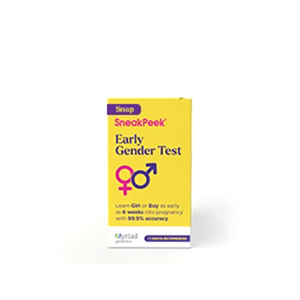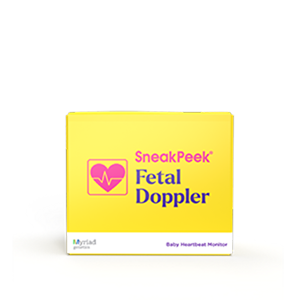Published on March 30th, 2022 and Updated on April 11th, 2024
If you and your partner have been trying to conceive for a while with no luck, you might start to wonder what steps you can take to increase your chances of getting pregnant. You’re already tracking your ovulation, monitoring your cervical mucus, and making monthly attempts at the right time, so what gives? Why can’t you seem to get that bun in your oven?
Well, speaking of buns, the solution might lie in your diet.
While you know there are some foods to reduce during pregnancy (like alcohol and processed meats), did you know there are also some foods to reduce or avoid when you’re trying to conceive? Although you may be craving anything from blue cheese to hot dogs while pregnant, it’s essential to be mindful of your diet for optimal fertility. In this article, we’ll give you the lowdown on the six foods to avoid when trying to get pregnant (as well as some tasty alternatives) so you can get that bun cookin’!
#1 Soda
When you wake up and start your day, do you reach for a bottle of bubbly to make your morning a little easier? No, we’re not talking about champagne (although we’ll have more to say about that later). We’re talking about non-diet soda.
Whether you’re a fan of Coke, Pepsi, or Dr. Pepper, there’s a reason to believe your soda consumption might be affecting your fertility. Interestingly, this potential disruption in fertility has more to do with the sugar content of non-diet sodas than their caffeine content.
The research on this is still being explored, but studies have shown that estrogen levels can increase with sugar-filled sodas. Although estrogen is a female sex hormone, having too much estrogen in the body can actually prevent ovulation—the all-important release of a mature egg.
- One study found that consuming at least 300mgs of caffeine in a day (or 3 cups of coffee) doesn’t meaningfully impact your fertility while you’re trying to conceive. However, if you drink a half serving of soda every day, you could experience a drop in fertility of up to 19% in just one month. And if you drink a full serving daily, your fertility levels could drop by up to 50%.
- Research demonstrates that sugary sodas and energy drinks have a significant impact on conception, while diet sodas (even those with caffeine) have little to no impact. This is because diet sodas lack sugar. Instead, they rely on artificial sweeteners (i.e. synthetic sugar substitutes), which studies have confirmed are safe to consume in moderation.
So, while you may be relying on your daily Coke or Red Bull to give you energy, try switching to diet soda, natural fruit juice, tea, or sparkling water while you’re attempting to conceive.
#2 Anything with Trans Fats
We all love a good home-cooked meal, but if your family dinners always end with a batch of your Grandma Trudy’s famous butter cookies, you might start passing the dish and opting for the fruit, instead.
This is because Grandma Trudy’s butter cookies are chock-full of trans fats—a type of fat that’s made when you add hydrogen to vegetable oil, turning a liquid fat into a solid one. Along with butter, trans fats can be found in the following foods:
- Cheese
- Milk
- Certain meats, like beef and lamb
The problem with trans fats occurs when they account for more than 1% of your daily caloric intake. At this rate of consumption, trans fats can increase your risk of ovulation issues by up to 73%. So, what should you eat instead?
To reduce your risk of ovulatory disorders and improve your fertility, research suggests choosing monounsaturated fats over trans fats. These are found in foods like:
- Avocados
- Nuts and seeds
- Olive oil
Luckily for you, both avocados and olive oil can be used as substitutes for butter in baking recipes, along with applesauce, Greek yogurt (a fertility-boosting superfood), and mashed banana. Even Grandma Trudy might not mind switching up her recipe for the sake of her future grandchild.
#3 High-Mercury Fish
While you may consider fresh fish to be a healthy alternative to trans fat-laden red meats, it’s important to know that not all fish are created equal.
In fact, some fish have high levels of mercury in them—a heavy metal that can seriously affect your body and fertility if it builds up.
The fish with the highest mercury levels tend to be on the bigger side because mercury moves up the food chain. When big fish eat little ones, they ingest the heavy metals in those smaller fish. All the mercury from those tiny fish then stay trapped inside the bigger ones, so when you eat those big fish, you absorb that mercury.
The offenders with the highest mercury levels that can affect human reproduction tend to be:
- Chilean sea bass
- Mackerel
- Swordfish
- Tilefish
- Tuna
Why exactly is mercury harmful if you’re trying to become pregnant? It can have the following effects:
- Sperm damage – For all the men out there reading this over their partner’s shoulder, this one’s for you! Mercury can create abnormalities in your sperm’s DNA and impair its swimming ability, decreasing your virility.
- Increased rate of menstrual issues – Eating fish high in mercury has been connected to higher rates of menstrual issues. When trying to get pregnant, menstrual issues can have a significant impact on the timing of your menstrual cycle. If menstrual issues cause cycle irregularity (meaning your ovulation window and menstruation window aren’t the same every month), you won’t be able to accurately predict the time of the month you’re most fertile, making it hard to know the best time to have sex to conceive.
- Fetal nervous system damage – This concern may seem like putting the cart ahead of the horse. After all, you’re trying for a baby; you’re not pregnant yet. But mercury stays in your system for a while, so if you’re eating a diet high in mercury while you’re trying to conceive, there may still be excess mercury in your system when you do get pregnant. Because mercury can adversely affect your little one’s developing nervous system, it’s best to avoid these mercury-laden fish before and during your healthy pregnancy.
If tuna handrolls or Chilean sea bass were your go-tos on date night, don’t worry—there are plenty of other delicious, low-mercury seafood options you can choose instead, including:
- Atlantic mackerel
- Catfish
- Crab
- Pollock
- Salmon
Bonus: salmon is an excellent source of essential omega-3 fatty acids, which are believed to help protect your eggs from age-related decline in quality.
#4 Alcohol
Remember earlier when we mentioned bottles of bubbly? Well, just like soda, champagne, prosecco, and other alcohols are best reduced or avoided when trying to conceive.
Why?
Research has found that women who drank alcohol while trying to conceive had a harder time getting pregnant than women who did not drink. However, how much you drink is also important. One study saw a stronger association between heavy drinking (i.e. more than 6 alcoholic drinks a week) and reduced female fertility than moderate drinking (3 to 6 drinks per week) and reduced fertility. This may be due to the fact that women who drink heavily are more likely to have irregular periods.
Another reason why trusted sources, such as the CDC, suggest pausing alcohol consumption when you’re trying to conceive? If you successfully conceive, but you don’t find out you’re pregnant for another week or two, you could be unknowingly drinking alcohol while pregnant. Doing so can potentially lead to Fetal Alcohol Spectrum Disorders (FASD).
FASD is a group of chronic disorders that occur when your little one is exposed to alcohol in utero. Since he’s still growing, absorbing alcohol through the placenta—aka the organ in your uterus that passes nutrients from you to your baby—can affect how his brain and organs develop.
FASD-related damage can cause a variety of physical, behavioral, and learning-related problems, with symptoms such as:
- Memory loss
- Hearing issues
- Smaller head size
- Learning disorders
- Attention issues
- Lower weight
- Heart, kidney, and bone issues
Fortunately, by significantly reducing or avoiding alcohol intake in your fertility diet, you can easily prevent FASD diseases while simultaneously increasing your likelihood of getting pregnant.
Get Trusted Answers About Your Little One with SneakPeek
When you’re trying to conceive, you may find yourself asking a lot of questions, like what are the best times to have sex, and what foods can help with implantation? Once you experience the elation of knowing your little miss or mister is on the way, a whole new set of questions arise—what should I be eating now, when do I get my first sonogram, am I having a girl or boy?
At SneakPeek, we’re committed to answering all of your pregnancy questions, particularly your questions surrounding your little one’s gender. With the SneakPeek At-Home Early Gender Prediction Test, you can learn the sex of your baby as early as six weeks into your pregnancy. All it takes is an easy-to-collect DNA sample, and we’ll take care of the rest.
Plus, our test is clinically-proven to have a over 99% accuracy1 rate, making it the #1 OBGYN-recommended at-home Gender Blood Test on the market today. We even guarantee a full refund if our results don’t match your baby’s gender.
So, after you conceive, try SneakPeek Test and join more than 1 million others in becoming a SneakPeek mom!
Sources:
- University of Utah. Study Links Sugar-Sweetened Soda To Higher Estrogen Levels.
- https://healthcare.utah.edu/healthfeed/postings/2013/03/032013sodaestrogen.php
- Lippincott Journals. Caffeinated Beverage and Soda Consumption and Time to Pregnancy. https://journals.lww.com/epidem/Fulltext/2012/05000/Caffeinated_Beverage_and_Soda_Consumption_and_Time.8.aspx
- FDA.gov. Trans Fat. https://www.fda.gov/food/food-additives-petitions/trans-fat
- CDC.gov. Alcohol and Pregnancy. https://www.cdc.gov/vitalsigns/pdf/2016-02-vitalsigns.pdf
- CDC.gov. Basics About FASDs. https://www.cdc.gov/ncbddd/fasd/facts.html
- Healthline. 5 Foods to Avoid When Trying to Get Pregnant. https://www.healthline.com/nutrition/foods-to-avoid-when-trying-to-get-pregnant
- Scientific American. How Does Mercury Get Into Fish? https://www.scientificamerican.com/article/how-does-mercury-get-into/
- FDA. Advice about Eating Fish. https://www.fda.gov/food/consumers/advice-about-eating-fish#:~:text=The%20Dietary%20Guidelines%20for%20Americans%20states%20that%20to%20consume%20those,%2C%20plaice%2C%20pollock%2C%20salmon%2C
- NIH. Prolonging the female reproductive lifespan and improving egg quality with dietary omega-3 fatty acids. https://www.ncbi.nlm.nih.gov/labs/pmc/articles/PMC5624332/#:~:text=Our%20data%20suggest%20that%20dietary,conceive%20and%20deliver%20viable%20offspring.
- CNY Fertility. Foods to Avoid When Trying to Get Pregnant. https://www.cnyfertility.com/foods-to-avoid-when-trying-to-get-pregnant/
- Let’s Get Checked. Can I Get Pregnant with High Estrogen Levels? https://www.letsgetchecked.com/articles/can-i-get-pregnant-with-high-estrogen-levels/
- Science Daily. Drinking alcohol is linked to reduced chances of pregnancy. https://www.sciencedaily.com/releases/2021/06/210608203716.htm
- Your Fertility. Alcohol. https://www.yourfertility.org.au/everyone/lifestyle/alcohol#:~:text=Drinking%20alcohol%20can%20reduce%20both,of%20having%20a%20healthy%20baby.
- NIH. The association between trans fatty acids, infertility and fetal life: a review. https://pubmed.ncbi.nlm.nih.gov/29383942/
- NIH. Dietary fatty acid intakes and the risk of ovulatory infertility. https://pubmed.ncbi.nlm.nih.gov/17209201/
- NIH. Diet and lifestyle in the prevention of ovulatory disorder infertility. https://pubmed.ncbi.nlm.nih.gov/17978119/
- Mayo Clinic. Artificial sweeteners and other sugar substitutes. https://www.mayoclinic.org/healthy-lifestyle/nutrition-and-healthy-eating/in-depth/artificial-sweeteners/art-20046936

Shop Our Products
SneakPeek aims to provide the most accurate and up-to-date information to help our readers make informed decisions regarding their health before, during, and after pregnancy. This article was written based upon trusted scientific research studies and/or articles. Credible information sources for this article are cited and hyperlinked.





